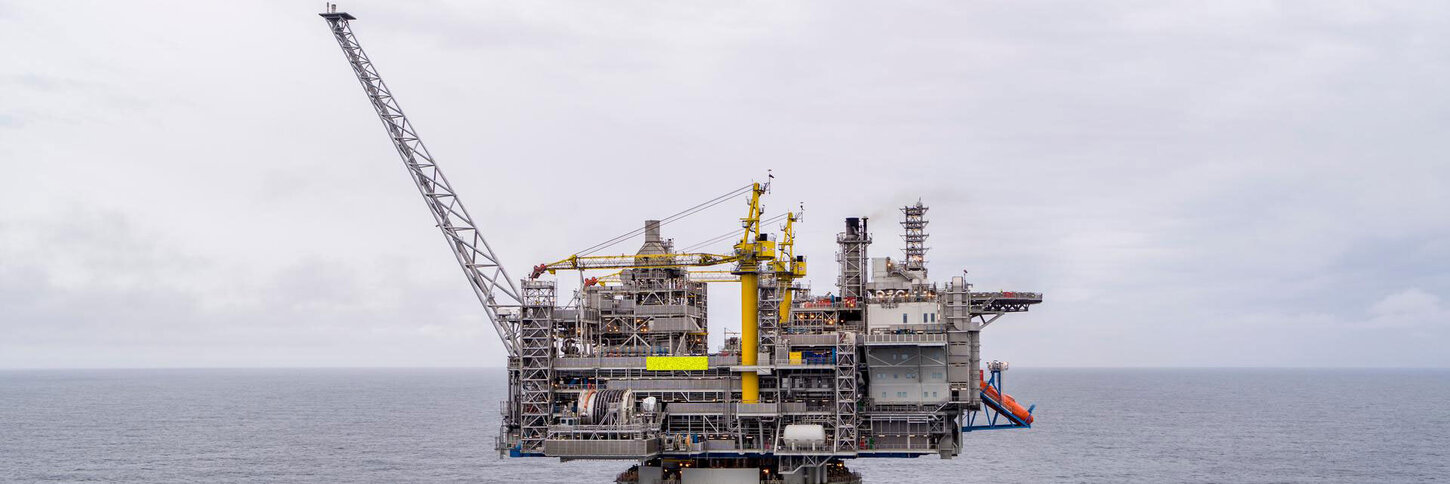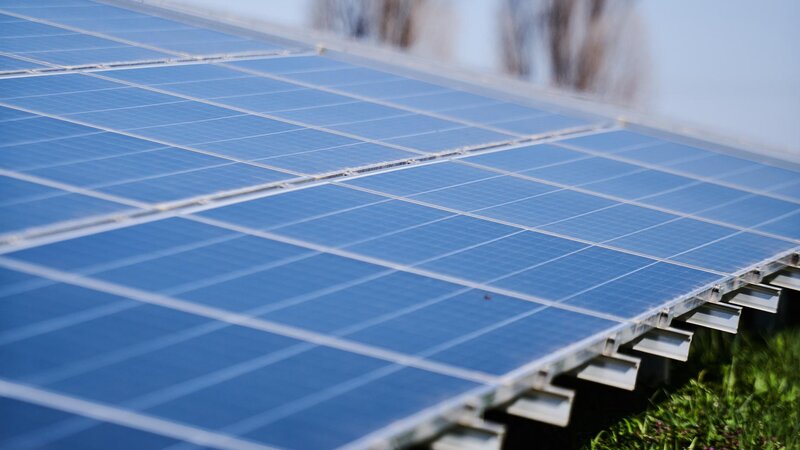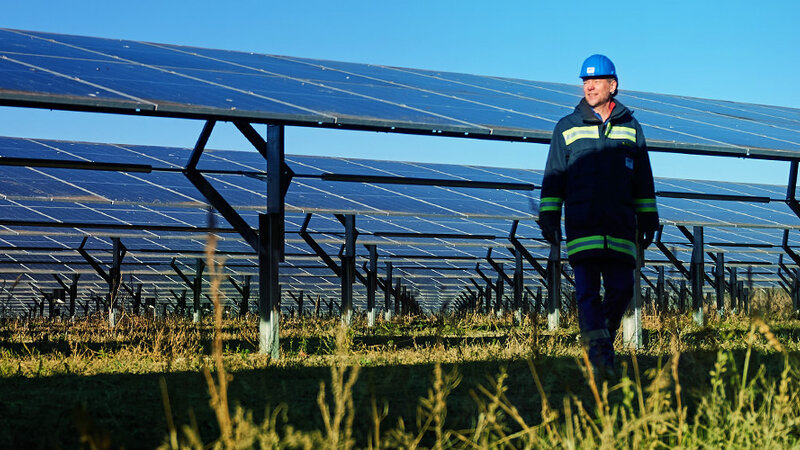
CCS/CCU: From above - to below - and beyond
Carbon Capture, Storage and Utilization
We need to rethink carbon dioxide. Climate change is the challenge of our time. And responsibility and accountability for change lies with us all; governments, businesses, consumers. No doubt.
Part of this is ensuring we tackle carbon emissions; critically, that we avoid them. But we know that reaching net-zero - the goal we must achieve - can’t just be about cutting them out. We have to be smart, resourceful and realistic about carbon. We need a new era of purposeful carbon management where we have to avoid it in the first place, stop it from escaping, store it safely or reuse it.
Because they stop carbon from escaping into the air; capturing it at the source of emission, changing its status from emission to asset, turning it into safely transportable carbon dioxide. From there, it can be safely stored by returning it to the earth, a secure and natural home, or used to create new things, like synthetic fuels or new material products.
CCS at OMV
At OMV, we’re also changing; transforming into a leading solution provider for a sustainable energy transition. We believe that CCS and CCU will be key solutions in this mission. It needs new momentum, investment, innovation and scaling. Always safe, always solving. Breathing new life into our mission to reinvent for a more sustainable living.

OMV is committed to becoming a net-zero company. In order to reduce greenhouse gas emissions, we will invest around EUR 5 bn in the development of low-carbon businesses, i.e. geothermal energy, renewables and Carbon Capture and Storage (CCS). For CCS we intend to offset absolute emissions both from captive use and third parties. The target for 2030 is to grow to 5 mn metric tons a year. This would equal the annual emissions of about 10 cement plants or is equal to 20% of Austria's annual industrial emissions.

CCS is a must-have to achieve net zero
CCS solutions are capturing carbon at the very source of emissions. Its state can be changed to liquid or gaseous carbon dioxide (CO2) and safely transported, allowing it to be safely stored by returning it to the earth by injecting it into the subsurface; a safe, secure and natural home. Alternatively, it can be reused as a raw material and fuel, creating new value. We believe that without CCS, net zero is too distant a possibility, so we must embrace it, invest in it and grow efforts to employ it in the global emissions challenge.

OMV is well placed to deliver on the benefits of CCS
At OMV, we put safety first in everything we do, whilst using innovation to change the game in the transition. We have the existing reservoir and subsurface capabilities and expertise needed to develop and expand CCS solutions. We have been awarded a license, in collaboration with Aker BP ASA, for CCS in Norway: this ‘Poseidon’ license has the potential to store more than 5 mn tons of CO2 per year. We also continue to evaluate new license opportunities to expand our potential.

A safe, proven technology
CCS has been applied in the industry since the 1970s and is legally required in the EU to be monitored for the next 30 years. Operators also remain liable for a further 20 years. As it changes state over time, the carbon dioxide dissolves and eventually becomes solid, making it a permanent part of the rock formation.

Partnership, investment and innovation
We are calling for partnerships across the value chain, which can create a strong chain of expertise to support progress. Without collective efforts, no individual organization can hope to achieve its own goals, let alone the larger goals we need to achieve more broadly, such as net-zero. With investment comes innovation and scale, catalysts that can make the difference.
How does CCS/CCU work?
Carbon Capture and Storage (CCS) is simply the opposite of an oil and gas project: reinjecting emissions, through liquid carbon dioxide, back into the earth. If we also talk about utilization - the conversion of carbon dioxide into value-added products - then we are talking about Carbon Capture and Utilization (CCU).

Steps: from above - to below - and beyond

- Carbon capture/sequestration:
Capturing and separating carbon dioxide from an industrial emissions exhaust
- Compression:
Captured carbon dioxide is compressed and converted into a liquid or gas
- Transport:
Transport to storage or utilization site via pipeline, ship or rail

- Storage and monitoring:
Injection of CO2 in an offshore or onshore underground reservoir with an overlying tight cap rock that ensures safe and permanent storage under permanent monitoring

- Utilization:
Utilization involves converting carbon dioxide captured from industrial, biogenic or atmospheric sources into value-added products
CCS project Poseidon
Aker BP ASA and OMV (Norge) AS have entered into a collaboration agreement for CCS and have been awarded a license under the CO2 storage regulations on the Norwegian Continental Shelf (NCS).
The license awarded to Aker BP and OMV is called Poseidon and is located in the Norwegian North Sea. Aker BP (50%) and OMV (Norge) AS (50%) hold interests in the license, which will be operated by Aker BP. The license comes with a work program that includes a 3D seismic acquisition and a drill or drop decision by 2025.
Through the award of this license, OMV embarks on a collaborative journey with Aker BP, enabling OMV to invest and utilize its expertise in expanding into offshore CCS activities in Norway. The secure and enduring storage of CO2 plays a pivotal role in OMV's mission to attain carbon neutrality by 2050.
The Poseidon license has the potential to store more than 5 mn tons of CO2 per year. The intention is to inject CO2 captured from multiple identified industrial emitters in North West Europe, including from Borealis’ various industrial sites in Europe.
Frequently asked questions
Climate change is humanity's greatest challenge, and carbon dioxide is the main culprit behind global warming. Leading experts like the United Nations' Intergovernmental Panel on Climate Change (IPCC) and the International Energy Agency (IEA) recognize that achieving emission targets is virtually impossible without large-scale CCS. So, CCS is essential to meeting the targets set by the Paris Agreement, and it is an opportunity to further contribute to a cleaner future for the generations to come.
Hard-to-abate industries like cement, steel, and chemicals, have no viable alternatives to CCS for deep emission reduction. This is because CO2 is not only generated from the use of fuels, but also through their production process as well.
Carbon Capture and Storage (CCS) is one of the key decarbonization technologies to effectively mitigate the release of carbon dioxide. It is an emission reduction process aiming to prevent large volumes of carbon dioxide being released from industrial sites to the atmosphere, transporting it and storing it in geological formations in the subsurface. CO2 can also be used to create new things, like fuel or new material products - this is called Carbon Capture Utilization (CCU).
CCS mitigates climate change by removing carbon from the atmosphere and tackling emissions from existing infrastructure. It’s a solution for the most challenging emissions from hard-to-abate industries such as steel, cement or petrochemicals. Moreover, CCS facilitates transition to renewable energy and enabling energy security while renewable energy sources are being scaled up.
Yes. CCS has been safely applied in the industry since the 1970s. In addition, CCS initiatives extend beyond the CO2 injection phase and include ongoing long-term monitoring efforts. CCS will only be done if it can be done safely - safe for employees and contractors, safe for the environment, and safe for local communities.
Over time, the injected CO2 dissolves in water and sinks due to its increased density, preventing it from escaping. Eventually, it reacts with minerals and becomes a permanent part of the rock formation.
Laws and regulations vary from country to country. As CCS is not permitted in Austria, OMV is not working on CCS there.
There are CCS projects all over the world. According to the Global CCS Institute Report “Global Status of CCS 2023” the number of CCS facilities in the development pipeline is at an all-time high. As of July 2023, there were 392 projects in the pipeline representing a 102% year-on-year increase. In 2023, a total of 41 projects were in operation, 26 were under construction and 325 were in early and advanced development.
More information
Ready to discover more? Immerse yourself in CCS with our latest news and videos. Join us as we pioneer the future of CCS/CCU and build a sustainable world for tomorrow.
- Aker BP and OMV awarded license for CO2 storage
- OMV collaborates with startups and tech frontrunners as part of transition to Low Carbon Business in Energy Division
- Can we bury carbon?
- Successful completion of seismic campaign for Poseidon CCS

